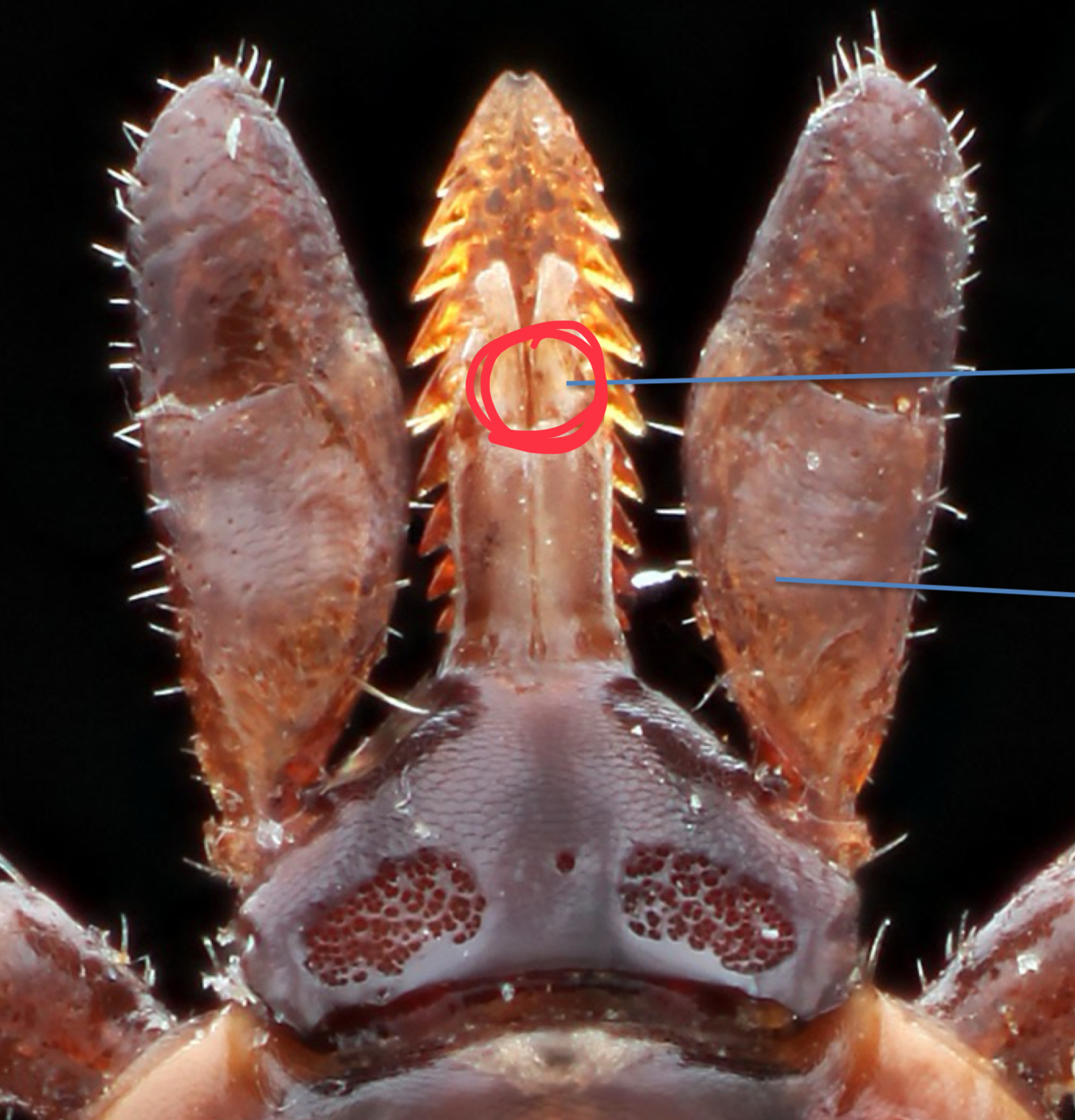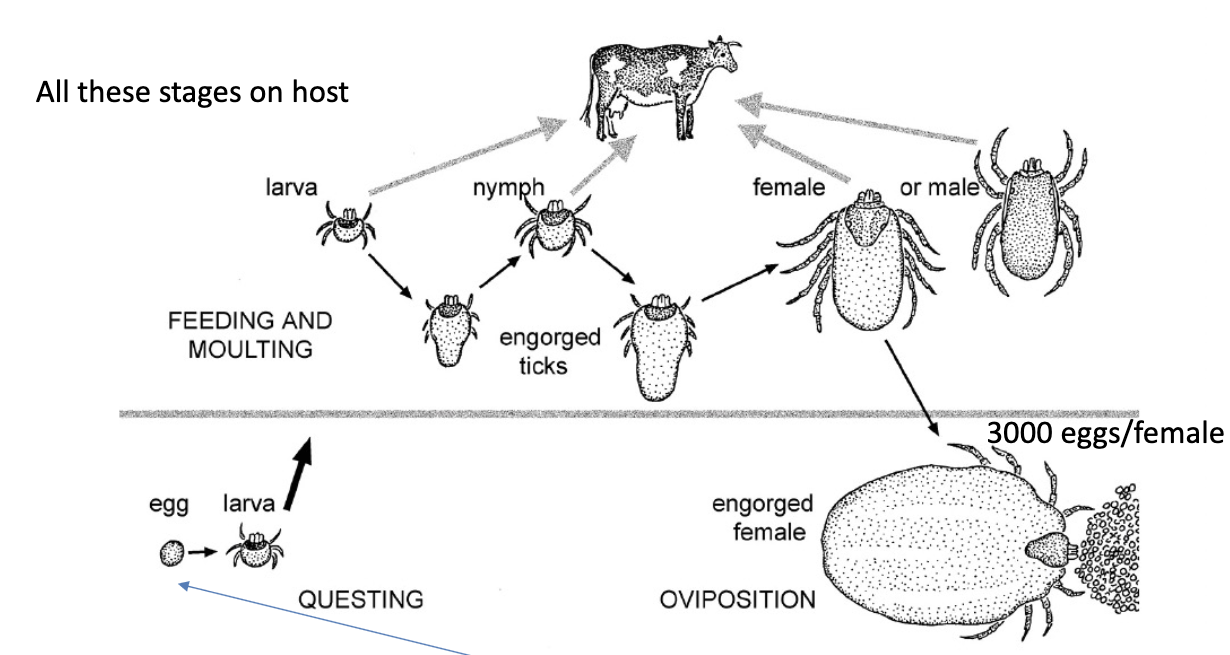Lecture 18: Ecdysozoans - Arthropods
1/37
There's no tags or description
Looks like no tags are added yet.
Name | Mastery | Learn | Test | Matching | Spaced |
|---|
No study sessions yet.
38 Terms
Summary (4)
– found in all major environments
– Major role in food chains: predator, prey, parasite, and symbiont
– Pollinators
– Decomposers and scavengers
Why are arthropods so successful? (6)
– High number of species and habitat diversity
– Adaptable body plan
– Thrive in a range of environments
– Segmented body
– Have been fused to allow greater control of body regions and specialization
– Exoskeleton with jointed appendages
What does the name arthropod mean?
Jointed feet
Adaptable body plan
– Early forms: pronounced segmentation, little specialization
– Fusion of segments to produce super segments
– Allow specialization of body and function
– Allow specialization of appendages away from wormlike organisms
Definition:
tagmatisation/tagmosis
-fusion of segments
Definition:
Tagmata
Super segments
Arthropod features (6)
– Exoskeleton
– Segmentation
– Tagmata
– Appendages
– Circulatory system
– Respiratory structures
Arthropod features:
Tagmata (4)
– Amalgamation of segments
– Head, thorax, abdomen
– Head, trunk
– Cephalothorax, abdomen
Arthropod features:
Appendages (2)
– tool for every purpose
– For mobility, sensing, feeding, reproduction
Arthropod features:
Respiratory structures (3)
– Gills
– Spiracles tracheae
– Book lungs
Arthropod features:
Circulatory system (4)
– Open (haemocoel)
– Ventral nervous system
– Complex expiratory system
– Sexual reproduction
What is the purpose of the exoskeleton?
– Physical and physiological protection
– Muscle attachment
– Body support
Exoskeleton
– Protein and chitin
– Must molt to grow
ecdysis (2)
– Temporary vulnerability
– Energetically expensive
Arthropod lineages (5)
-trilobites
-chelicerates
-hexapods
-crustaceans
-myriapods
Which of the arthropod lineages are extinct?
Trilobites
To which arthropod lineage do insects and six legged relatives belong?
Hexapods
How are living arthropods organized?
Based on mouthparts
What are the two groups of arthropod mouthpart organization?
-Chelicerate
-Mandibulate
chelicerate mouthparts
-chelicerae for grasping food
-fanglike or pincers
mandibulate mouthparts
-mandibles for chewing
chelicerae in spiders (2)
-hollow
-venomous
summary:
chelicerates
-simple body plan: chephalothorax, abdomen
-no true antennae
-chelicerae, pedipalps
-eyes: up to 8 single lens eyes
-adults: 4 pairs of legs
-parasitic chelicerates can reside on other chelicerates
chelicerates:
chelicerae
-paired feeding appendages
-modified into fangs (spiders) or pincers
chelicerates:
pedipalps
-palps: feeding or sensory
Arachnids are chelicerae’s. Who are the arachnids? (4)
-spiders
-scorpions
-ticks
-mites

-chelicerae
vet importance:
ticks (acarines) (7)
-external parasites: mammals, birds, reptiles
-1-3 host individuals can be used in each life cycle
-heavy blood feeders: female ticks engorge (up to 100x)
-saliva assists feeding
-are vectors for disease spread
-secretes neurotoxins (paralysis tick)
-can cause: blood loss, skin damage
ticks (acarines)
vectors for…
Babesia (tick fever); (canine erlichiosis - in northern Australia)
what is an example of a 1-host tick?
cattle tick
Rhipicephalus (Boophilus) australis

Rhipicephalus (Boophilus) australis
cattle tick lifecycle
Female drops of host and lays up to 3000 eggs. Then she dies and the eggs becomes larvae. The larva does questing which is search for a new host. Once on the new host they complete their growing stages on the host until the female is ready to lay eggs.
definition:
hypostome
tooth denticulate. These are backwards facing teeth that make it really difficult to remove a tick from its host
are mites free-living or parasitic?
free living
what is an example of an ectoparasitic species?
scabies mite
summary:
Scabies mites (3)
-live in burrows in the skin
-egg to adult on one host transmits via contact
-causes mange
what arthropod causes mange?
-scabies mite
definition:
mange
-hair loss
-scabs
-keratinised skin with mites
-found by skin scraping

mange
-scabies mite